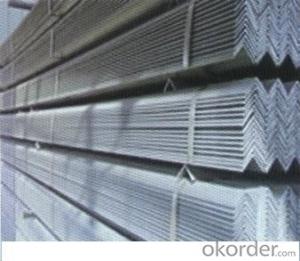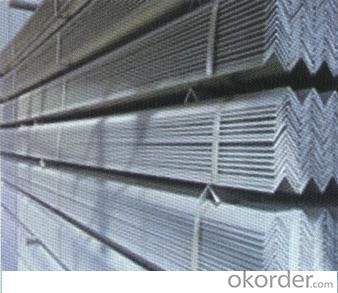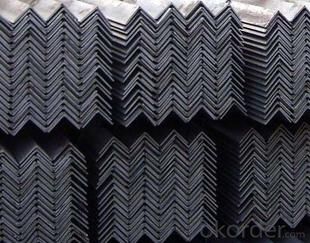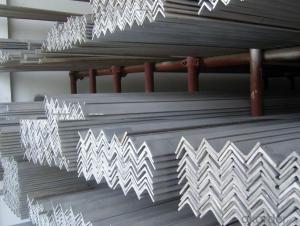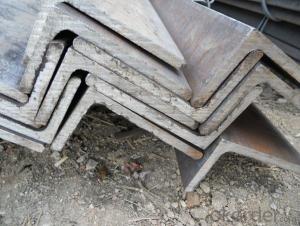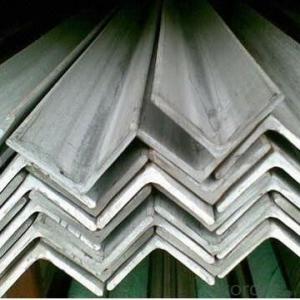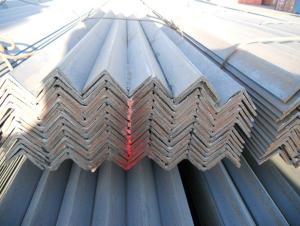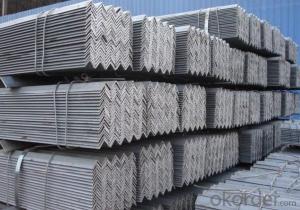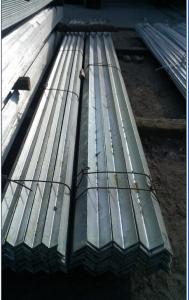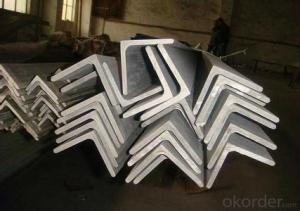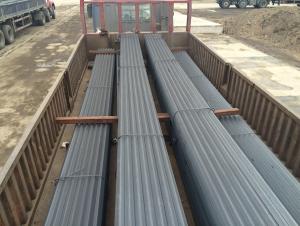GB Q235B galvanized angle steel for construction
- Loading Port:
- Tianjin
- Payment Terms:
- TT OR LC
- Min Order Qty:
- 25 m.t.
- Supply Capability:
- 10000 m.t./month
OKorder Service Pledge
OKorder Financial Service
You Might Also Like
Product Description:
ASTM 316l Stainless Angle Steel Bar
1.Surface:Bright,Polished,Turn smooth(Peeled),Brush,Mill,Pickled
2.Length:3m, 6m,9m,12m
3.Use:These products are widely supplied to areas of machine-made industry,chemical industry,spin,shipping industry,architecture,food industry,household products etc
4 ISO9001:2008
SPECIFICATION
Standard | AISI, ASTM, BS, DIN, GB, JIS, etc |
Grade | Q195, Q215, Q235, Q345, SS400, A36, S235JR, ST37, etc |
Technical parameters:
1) Material: Q235B , Q 345B, SS400 ,SS540, S235JR ,ETC. | |||
| 2) Usage: structure construction and electronic tower building | |||
| 3) Weight tolarance: -4% TO -10% | |||
| 4) Size tolarance : | |||
| ANGLE STEEL SIstructural steel angleE TOLARANCE (MM) | |||
| SIstructural steel angleE cm | WIDTH b/mm | THICKNESS d/mm | LENGTH /m |
| 2-5.6 | +/-0.8 | +/-0.4 | 4-12 |
| 6.3-9 | +/-1.2 | +/-0.6 | 4-12 |
| 10-14 | +/-1.8 | +/-0.7 | 4-12 |
| 16-20 | +/-2.5 | +/-1.0 | 4-12 |
| 5) Payment terms: TT or LC | |||
| 6) Delivery date: within 30 days after receiving the LC or TT prepay | |||
| 7) Packing: Export package | |||
| 8) Inspection: accept third party inspection | |||
Other Steel Bar Specification:
1.Square bar:Size: 4mm*4mm~100mm*100mm
2.Round Bar:Diameter: 3mm~800mm
3.Angel Bar:Size: 3mm*20mm*20mm~12mm*100mm*100mm
4.Flat bar:Thickness: 2mm~100mm,Width: 10mm~500mm,
5.Hexagonal :Size: 2mm~100mm
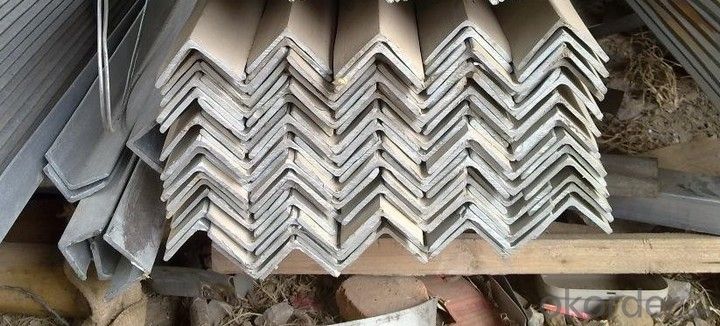
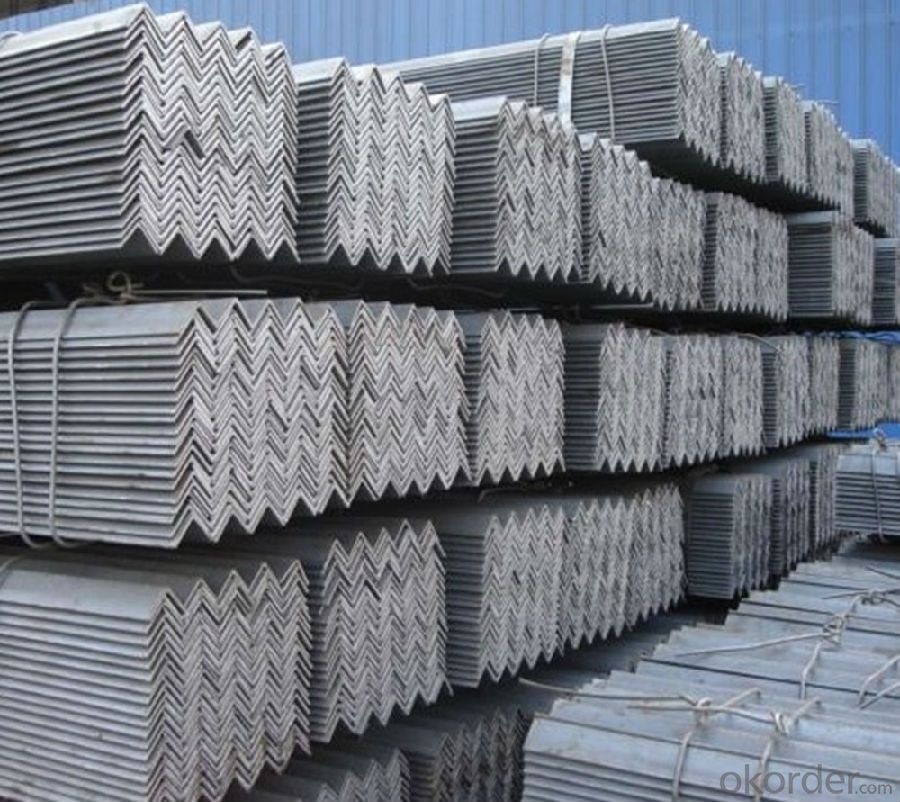
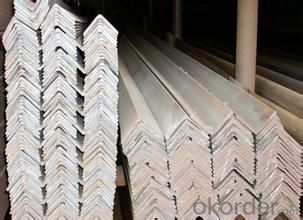
- Q: What is the weight-bearing capacity of steel angles?
- The weight-bearing capacity of steel angles is determined by a range of factors, including the angle's dimensions, thickness, the type of steel employed, and the specific load it bears. Due to their strength and load-bearing capabilities, steel angles find widespread use in construction and structural applications. Nevertheless, it is crucial to refer to engineering tables or seek guidance from a structural engineer to ascertain the precise weight-bearing capacity of a steel angle in a given scenario.
- Q: How do you prevent steel angles from corroding in saltwater environments?
- In order to prevent corrosion of steel angles in saltwater environments, there are several measures that can be taken: 1. Galvanization is a highly effective method for corrosion prevention. This involves applying a protective layer of zinc to the steel angles, which acts as a sacrificial anode and prevents direct contact with saltwater. The zinc coating corrodes instead of the steel, ensuring its longevity. 2. Barrier coatings, such as epoxy, polyurethane, or other corrosion-resistant paints, can be applied to provide an additional layer of protection against saltwater. These coatings act as a physical barrier, shielding the steel from the corrosive effects of saltwater. 3. Cathodic protection is another effective technique for preventing corrosion in saltwater environments. This involves connecting the steel angles to a sacrificial anode made of a more active metal, like aluminum or magnesium. The sacrificial anode corrodes instead of the steel, offering protection to the steel angles. 4. Regular maintenance is crucial to prevent corrosion in saltwater environments. This includes regularly inspecting and cleaning off any salt deposits or contaminants that may have accumulated. Any damaged or missing protective coatings should be repaired. Additionally, routine checks should be conducted to ensure the effectiveness of galvanization or cathodic protection systems. 5. Material selection plays a significant role in enhancing the resistance of steel angles to saltwater corrosion. Choosing corrosion-resistant alloys or stainless steel, such as grade 316 or duplex stainless steels, can greatly enhance their durability in saltwater environments. By implementing these preventive measures, the steel angles can be protected from the corrosive effects of saltwater, ensuring their long-lasting durability even in challenging marine conditions.
- Q: What are the considerations for selecting the appropriate steel angle connection type?
- When selecting the appropriate steel angle connection type, several considerations need to be taken into account. These include the load requirements, the structural design, the available space, the cost, and the ease of installation. The load requirements determine the strength and stability needed for the connection, while the structural design dictates the type of connection that will best support the overall structure. The available space influences the size and configuration of the connection, ensuring it fits within the designated area. Cost is an important factor, as different connection types vary in terms of material and labor expenses. Lastly, the ease of installation determines the feasibility and efficiency of implementing the chosen connection type.
- Q: Can steel angles be used for staircase handrails?
- Yes, steel angles can be used for staircase handrails. They are commonly used due to their durability, strength, and versatility in design. Steel angles provide a sturdy support system for staircase handrails and can be customized to fit different styles and preferences.
- Q: Are there any industry standards or certifications for steel angles?
- Steel angles have industry standards and certifications. The main standard for steel angles is the ASTM standard, specifically the ASTM A36 specification. This specification outlines the necessary chemical composition, mechanical properties, and dimensional tolerances for structural steel angles. Aside from ASTM, other organizations like AISC and SJI also provide guidelines and standards for steel angles used in construction and structural engineering. These standards guarantee that steel angles meet specific requirements in terms of quality, strength, and performance. Moreover, certifications like ISO 9001:2015 and ISO 14001:2015 are widely recognized in the steel industry. These certifications indicate that a manufacturer has implemented a quality management system and complies with environmental management standards. Adhering to these industry standards and certifications is crucial for manufacturers, suppliers, and construction professionals. It ensures the dependability and safety of steel angles in various applications.
- Q: Can steel angles be used in the construction of power plants?
- Yes, steel angles can be used in the construction of power plants. Steel angles are commonly used in structural applications and are well-suited for supporting heavy loads and providing structural stability. In power plant construction, steel angles can be utilized for various purposes such as framing structural components, supporting equipment and machinery, reinforcing concrete structures, and providing structural integrity to the overall plant infrastructure. Additionally, steel angles offer excellent resistance to corrosion, which is particularly important in power plants where exposure to high temperatures, moisture, and chemicals is common. Overall, the versatility, strength, and durability of steel angles make them a suitable choice for use in the construction of power plants.
- Q: How do you prevent and address corrosion in steel angles?
- To prevent and address corrosion in steel angles, several measures can be taken. Firstly, applying a protective coating such as paint or galvanization can create a barrier between the steel and corrosive elements. Regular maintenance and inspection are also crucial to identify and address any signs of corrosion early on. Additionally, keeping the steel angles clean and dry, and avoiding contact with corrosive substances, can significantly reduce the risk of corrosion. Implementing proper drainage and ventilation systems in areas where steel angles are installed can also help prevent moisture buildup, which is a common cause of corrosion.
- Q: Are steel angles suitable for manufacturing equipment enclosures?
- Yes, steel angles are suitable for manufacturing equipment enclosures. Steel angles provide excellent strength, durability, and stability, making them ideal for constructing sturdy enclosures to protect equipment. They are also versatile and can be easily welded or bolted together to form the desired shape and size for the enclosure. Additionally, steel angles can withstand various environmental conditions and offer protection against impacts and other potential hazards.
- Q: How do you prevent steel angles from rusting in high humidity environments?
- To prevent steel angles from rusting in high humidity environments, a common approach is to apply a protective coating like paint or epoxy. This creates a barrier between the steel and moisture, preventing direct contact and inhibiting rust formation. Additionally, regular inspections and maintenance, such as cleaning and reapplying the protective coating when necessary, can help ensure the longevity of the steel angles in such conditions.
- Q: What are the different methods for joining steel angles?
- There are several methods for joining steel angles, each with its own advantages and applications. Some of the most common methods include welding, bolting, and using adhesive or epoxy. Welding is a popular method for joining steel angles as it provides a strong and permanent connection. It involves melting the edges of the angles with a welding torch and then allowing them to cool and solidify, creating a bond between the two pieces. Welding can be done using various techniques such as arc welding, MIG welding, or TIG welding, depending on the specific requirements of the project. Bolting is another method commonly used to join steel angles. It involves using nuts and bolts to secure the angles together. This method allows for easy disassembly and reassembly if needed, making it suitable for situations where flexibility is required. Bolting also does not require any heat or special equipment, making it a relatively simple and cost-effective option. Using adhesive or epoxy is a non-traditional method for joining steel angles. It involves applying a strong adhesive or epoxy to the contact surfaces of the angles and then pressing them together. This method can provide a strong and durable bond, especially when using high-strength adhesives designed for metal bonding. Adhesive bonding is often used in situations where welding or bolting may not be feasible or desired, such as with thin or delicate materials. Overall, the choice of joining method for steel angles depends on factors such as the specific application, desired strength and durability, ease of installation, and the need for disassembly or flexibility. Consulting with an expert or engineer is recommended to determine the most suitable joining method for a particular project.
Send your message to us
GB Q235B galvanized angle steel for construction
- Loading Port:
- Tianjin
- Payment Terms:
- TT OR LC
- Min Order Qty:
- 25 m.t.
- Supply Capability:
- 10000 m.t./month
OKorder Service Pledge
OKorder Financial Service
Similar products
Hot products
Hot Searches
Related keywords
